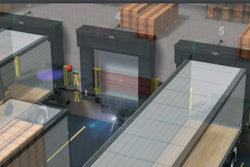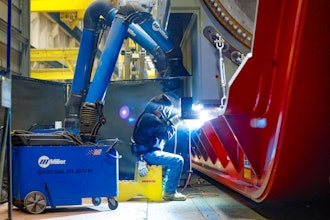1
Comparative Analysis of Stainless
and Plated/Coated Carbon Steel
Corrosion and Fastener Material Selection
by Michael J. Pasko, Application Engineer
SPIROL International Corporation
WHITE PAPER
The purpose of this paper is to address corrosion in general
terms – not to provide a comprehensive reference in regard
to all forms of corrosion or a detailed analysis of the strengths
and weaknesses of specific alloys. Corrosion of stainless
and carbon steel are very different and this paper will provide
information regarding general attack or surface corrosion as
this is often a primary consideration when selecting fastener
material.
Carbon and stainless steel are the most common materials
from which fasteners are manufactured and each is
available in hundreds of alloys or grades with a wide variety
of attributes. Initial cost of a stainless steel component is
generally higher than carbon steel though not always. For
example - material is a smaller component of cost in a light
duty Coiled Pin than it is in a Solid Pin of the same diameter
and length. As a result the stainless steel Coiled Pin may
be available at equal or lesser cost than the carbon steel
Solid Pin. In addition, secondary processes, such as heat
treating or plating, often add to the cost of carbon steel
parts when they may not be incurred with stainless steel.
Cost is meaningless without consideration of value. For
example, the manufacturer of a high end outdoor barbecue
grill may select stainless steel fasteners capable of resisting
corrosion much longer than the product’s expected life span.
This selection would demonstrate commitment to product
integrity, cosmetic appearance, and long life. The ‘value’
of a fastener that provides maximum quality may offset any
associated cost increase. The same manufacturer may
opt for lower priced plated steel fasteners for a model sold
under a discount brand if the anticipated consumer is more
conscious of cost than quality. Both are valid reasons to select
one material over the other though the choice of stainless
steel requires the customer
to consider value as much as
cost. Designers must weigh
cost, benefit, and risk when
choosing the appropriate
fastener material.
SPIROL manufactures
Coiled Pins, Slotted Pins,
Solid Pins, Inserts, Tubular
Products, Machined Nuts,
Compression Limiters, Shims
and Disc Springs to service
a wide variety of industries
around the globe. Although
SPIROL manufactures parts
from many materials, both ferrous and non-ferrous, the
scope of this paper is limited to ferrous metal products, and
more specifically, stainless and carbon steel. SPIROL’s
ferrous product is manufactured from four primary standard
material groups:
• Low Carbon Steel
• High Carbon Steel & Alloys
• Martensitic Chrome Stainless Steel (AISI 410 & 420,
EN/DIN 1.4516 & 1.4021)
• Austenitic Nickel Stainless Steel (AISI 302, 304, 305 or
EN/DIN 1.4319, 1.4301, 1.4303)
Though carbon and stainless steel are both ferrous metals,
meaning they contain iron, their response to corrosive attack
is much different. By definition stainless steel must contain
at least 10.5% chromium. When exposed to oxygen this
alloying element creates a layer of chromium oxide at the
surface that quickly stops growing thus becoming ‘passive’.
This passive layer is continuous, uniform in thickness,
insoluble, and non-porous. The passive layer prevents
contact between oxygen in the environment and base
metal and will self heal if scratched or abraded as long as
oxygen remains available. The passive layer is only 10 to
100 atoms thick and as such has no dimensional impact on
parts. Though stainless steel can corrode when exposed to
some chemical agents under specific conditions, it will not
rust by uniform or general attack as does carbon steel. As
an alloying element, the chromium is part of a homogenous
blend and is deemed safe as it cannot be easily liberated
from the alloy. A final note regarding stainless steel is the
relative ease with which it is recycled. Stainless steel is
100% recyclable and industry analysts estimate 80-90% of
discarded stainless steel is captured for recycling.
Rust occurs in iron and iron
alloys such as steel. Rust is
a layer of iron oxide created
at the surface of a part when
exposed to oxygen in the
presence of moisture. This
layer of iron oxide remains
active and continues to
convert iron to iron oxide as
the outer layers lose integrity
and fall away exposing new
metal (See Figure 1). Iron
oxide is also porous allowing
it to absorb moisture and
elements that may contribute
Figure 1. Rusting chain demonstrates material loss due to rust or general attack.
2
to corrosion thus extending the period of active corrosion
with each exposure. To prevent the formation of iron oxide
or rust it is necessary to eliminate exposure to oxygen and
moisture. For these reasons it can be observed that motor
vehicles operated in dry climates will exhibit far less corrosion
or rust than the same vehicle operated in a wet environment.
In cold wet environments where deicing agents are used on
roadways the rate and severity of attack is further increased.
Carbon steel fasteners are generally lower cost than
stainless steel and finishes are available that provide
excellent corrosion resistance. It should be noted that these
finishes do contribute to dimensional growth that must be
considered in design. Carbon steel may be protected from
corrosion by painting, plating, or coating. Paint is generally
not appropriate for fasteners as it tends to be a rack rather
than bulk process and is therefore not cost effective. Plating
and coating are the predominant methods of preserving
carbon steel though some of these processes have fallen
out of favor due to their environmental impact. Examples of
finishes considered hazardous are cadmium and hexavalent
chromates. The past decade has witnessed the maturity of
bulk coatings and platings capable of providing excellent
corrosion resistance at low cost while satisfying current
environmental regulations. Despite these advances, the
base metal’s susceptibility to rust remains an Achilles heel.
The vast majority of platings and coatings are sacrificial,
meaning they only provide protection until they are depleted.
Once base metal is exposed, it will rust. Some examples of
available finishes and coatings are, but are not limited to:
• Zinc phosphate conversion coating – typically followed
by application of oil or other rust preventive agent.
Secondary application of rust preventive determines
corrosion resistance and this ranges from minimal to
competitive with platings and other coatings.
• Mechanically applied zinc – minimal risk of hydrogen
embrittlement is this finishes primary benefit. Finish can
be thicker than electroplate and is not as smooth. Often
provided with secondary application of chromate and/or
sealers to improve performance.
• Zinc electroplate – typically provided with supplemental
trivalent chromate and often a final sealer. These
finishes introduce the risk of hydrogen embrittlement for
high strength steel; though parts are typically baked in
an effort to eliminate this potential problem.
• Zinc nickel electroplate – higher corrosion resistance
than traditional zinc electroplate. As with standard
zinc electroplate, this process also requires baking
of high strength steel to reduce the risk of hydrogen
embrittlement.
• Aluminum zinc lamellar coatings – Dip spin process
capable of very high corrosion resistance without risk of
hydrogen embrittlement.
The most widely accepted method of corrosion testing
is the salt spray test. The intent of salt spray testing is to
provide a repeatable method by which a material or finish’s
response to corrosive attack can be evaluated. In theory
this also provides a means to compress life cycle testing into
a practical period of time. For example, it is not practical
for the manufacturer of an exterior door handle to leave
a handle outdoors for 15 years to determine if a 15-year
warranty is appropriate. It is practical to place the handle
in a salt spray booth for a short period of time in an effort to
replicate the impact 15 years of corrosive attack may have.
It is important to understand that such comparisons may
be grossly inaccurate though this method of test remains
one of few choices available. No accurate correlation exists
between real world conditions and time spent in a salt spray
booth. If the door handle manufacturer is concerned with
product used in coastal areas, it is critical to understand that
potential exposure will only occur intermittently. There may
be periods of months with no storms, dry weather, and little
if any exposure to corrosive elements. In short, salt spray
testing is extreme in relation to the intended use of many
fasteners/components and test durations are arbitrarily
assigned based upon a designer’s best guess regarding
correlation with actual conditions. Finally, while many
manufacturers now assign salt spray testing to stainless
steel product; it is primarily intended for carbon steel parts.
Stainless steel is generally tested in a humidity chamber
without salt. In instances where exposure to chlorides is
of paramount concern, salt spray testing is an acceptable
method of test for stainless steel.
Salt spray test requirements generally consist of two simple
criteria – the hours it takes for white corrosion to form and
subsequently, the hours it takes for red rust (or base metal)
attack to begin. Salt concentration, temperature, and time
are carefully controlled. The majority of coatings and platings
rely upon a layer of nonferrous metal applied over the base
metal followed by a chromate dip and depending upon
performance requirements, an organic or inorganic sealer.
When these finishes fail, they do so opposite the order in
which they were applied. Once the corrosive environment
breaches the outer sealer and chromate layers it begins to
attack the nonferrous metal beneath. At this point white
corrosion begins. Nonferrous metals such as zinc, nickel,
aluminum, and magnesium do not contain iron and will not
‘red rust’. Red rust only becomes visible after the sacrificial
metal has been depleted (See Figure 2).
An issue with both electro and mechanical plating is the
difficulty associated with plating in deep holes and significant
crevices. This is of concern on many of the products SPIROL
Figure 2: This Coiled Pin was finished with a light duty zinc plating and subsequent
chromate dip. The finish was rated for 48 hours to ‘red’ corrosion protection.
Leaving this item in salt spray for 200 hours has resulted in significant red rust
though some zinc and white corrosion remain. Where zinc is present on the
surface, the part remains free of red rust despite the severity of attack in adjacent
areas.
3
manufactures such as Coiled and Slotted Pins as well as
Tubular Parts. Neither process is capable of achieving proper
deposition in the interior of a tube (See Figures 3 and 4).
Though the process of applying these finishes may deposit
chromate and sealer within the interior, it is not possible to
achieve 100% coverage with the nonferrous metal (zinc in
this case); and this is the most important finish component.
Unlike mechanical and electroplating, coatings applied as
a liquid are capable of proper coverage in a part’s interior
though as previously noted; Coiled Pins present a unique
challenge in that the space between coils is unlikely to
receive substantial coverage. While this may appear to be a
significant concern, it is critical to understand there are many
forms of corrosion, and in regard to fasteners, corrosion in
these locations is often of little concern. Hundreds of billions
of plated fasteners have been utilized successfully over the
years despite these issues. If a fastener is fully installed in
a host material, it may be largely protected from attack. A
good example would be a Compression Limiter sandwiched
between two components, protected by a gasket, and
capped with a flanged bolt. In terms of galvanic corrosion,
the finish need not be uniform to provide protection as it will
be sacrificially depleted to protect the base metal as long as
current can flow from one to the other. For example, a steel
boat hull can be protected by bolting sacrificial zinc anodes
in strategic locations – it is not necessary to galvanize or zinc
plate the entire vessel. Similarly, zinc on the outer diameter
of a Coiled Pin will protect the interior if galvanic corrosion is
the mechanism of attack.
The advantage of stainless steel remains its ability to
resist corrosion without the aid of protective finishes.
Corrosion resistance is provided by chromium and this is
distributed throughout the alloy. Stainless steel can corrode
and fail though it does not rust due to general attack or
surface corrosion. Pitting is the most common form of
corrosion affecting stainless steel. Pitting may occur when
environmental agents or mechanical abrasion/scratching
defeat the passive layer under conditions where it cannot
spontaneously reform. Local attack can then occur. In salt
spray, a water droplet may form on the surface of a part. The
water droplet may then concentrate chloride which is highly
corrosive. An alternate form of attack generally spread
over a larger area is crevice corrosion. This form of attack
may occur where there are sharp inside corners or where
components touch in a manner that creates potential points
of fluid deposition. Good design practices can minimize
crevice corrosion, though in many instances it is inherent to
the intended function of an application. It is also possible to
improve corrosion by moving to other stainless steel alloys.
Common methods used to increase resistance to pitting
are the addition of molybdenum or higher concentrations
Figure 3: This photograph demonstrates the basic geometry of a Coiled Pin – it
consists of a number of metal wraps. Platings will not penetrate between the
wraps and dip coatings, though capable of covering the interior, will remain
ineffective between the pin’s wraps. Figure 4: To demonstrate attack between the Coiled Pin’s coils (or wraps) of steel,
the photograph below was taken after cross-sectioning the pin shown in Figure 3.
4
Figure 5: Pins prior to test: the top two are low carbon steel coated with zinc
lamellar, the bottom two are austenitic 305 SST.
Figure 6: After test, the 305 SST parts remain unchanged (left) while the coated
parts (right) exhibit significant white corrosion.
of chromium and/or nickel. Increased corrosion resistance
typically elevates cost and should therefore only be pursued
when necessary.
Of the two stainless steels offered by SPIROL, austenitic (or
nickel) stainless steel provides the best corrosion resistance
while martensitic (or chrome) stainless is more easily
attacked. Nickel stainless steel has two advantages: 1)
chromium content is increased from 12% to 18%, and 2) 8%
nickel is added to increase resistance to attack from mineral
acids. The pairing of chrome and nickel in the proper ratio
allows for the creation of an austenitic structure. Martensitic
chrome stainless steel may be less corrosion resistant;
however, it can be heat treated to achieve higher strength,
and the subsequent low rate of work hardening provides
excellent fatigue resistance.
Figure 7: Pitting with related staining on 420 stainless Slotted Pin.
Figure 8: Cross section of pit shown in Figure 7 demonstrating impact on cross-
sectional area and reduction in strength.
To demonstrate the difference between stainless steel and
coated carbon steel two solid pins were manufactured with
identical geometry from each material. The stainless steel
pin was passivated while the low carbon steel pin was coated
with a zinc lamellar product (See Figure 5). At 720 hours
the coated part has performed well though white corrosion
is readily apparent. Once the zinc is depleted, rust will
begin. In contrast the austenitic stainless steel pins appear
virtually unchanged (See Figure 6). A properly passivated
300 series SST pin can provide up to 2,500 hours protection
in salt spray.
As previously noted, martensitic stainless steel is less
resistant to corrosion than austenitic and it is generally
not tested in salt spray for this reason. Both 410 & 420
stainless steel provide good corrosion resistance in
normal atmosphere, fresh water, body fluids, and culinary
environments as well as mild oxidizing acids such as chromic
and nitric acid. The following martensitic stainless steel pins
were placed in salt spray and observed for a period of 300
hours. Staining was evident after 48 hours with minor pits
beginning to form. After 300 hours pitting was severe and
easily captured in the following photographs (See Figures 7,
8, 9 and 10).
5
In summary, though great advances
have been made in regard to finishes
and coatings available for carbon steel
they remain susceptible to corrosion. It
is a matter of when, not if, the finish will
eventually fail. Stainless steel is often
associated with higher cost, although the
cost of failure can be much greater. The
intended environment and life expectancy
of a product must be given adequate
consideration and the appropriate
material and/or finish selected to ensure
success. It is also important to evaluate
alternative solutions whenever possible.
Reducing material volume by moving
from Solid Pins, Alignment Dowels, and
other products to Coiled Spring Pins and
Tubular Products can significantly reduce
weight therefore lowering cost. Carbon
steel does not always present the lowest
installed cost solution and ‘value’ should
always be considered. Stainless steel
is not impervious to attack and the host
materials and environment must always
be evaluated carefully to ensure the
correct grade/type is used.
Figure 10: Cross section of pit shown in Figure 9 demonstrating impact on cross-sectional area and
reduction in strength.
Figure 9: Pitting with related staining on a 410 stainless steel Solid Pin.
SPIROL offers complimentary Application Engineering support.
Comparative Analysis of Stainless Steel and Carbon Steel Fasteners
Corrosion of stainless and carbon steel are very different. This paper will provide information regarding general attack or surface corrosion as this is often a primary consideration when selecting fastener material.
Latest in Home



















